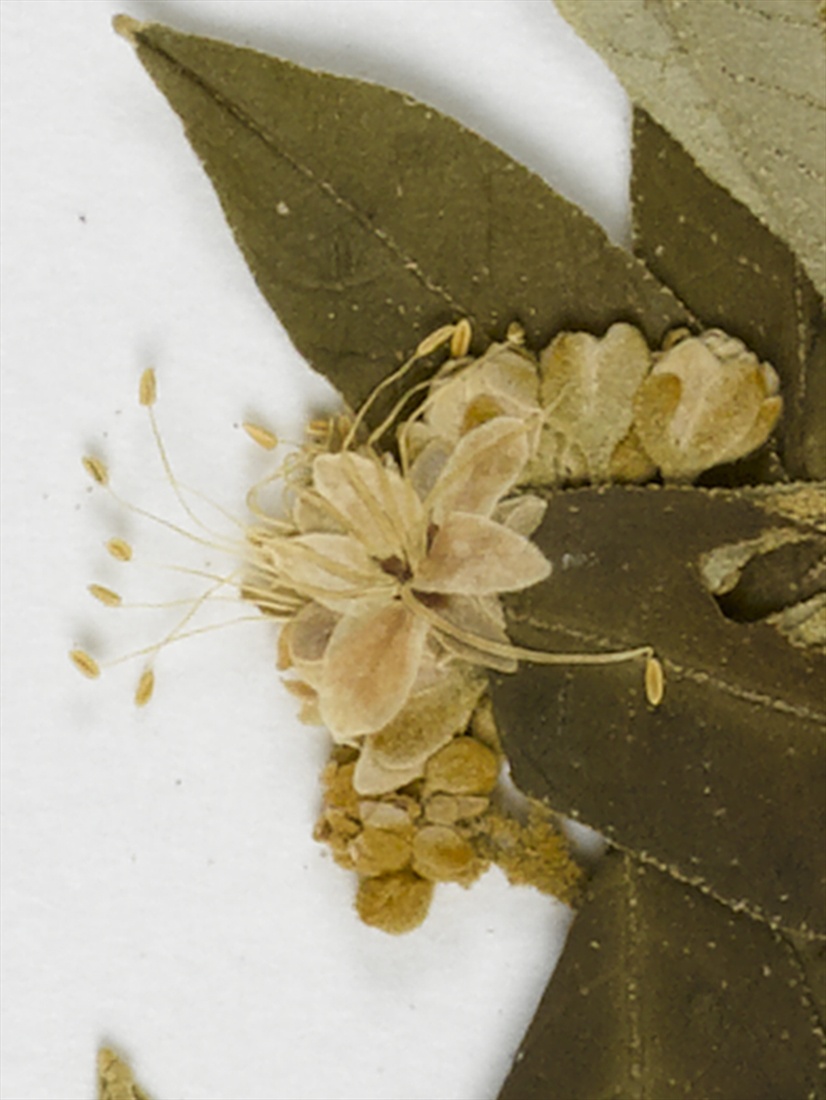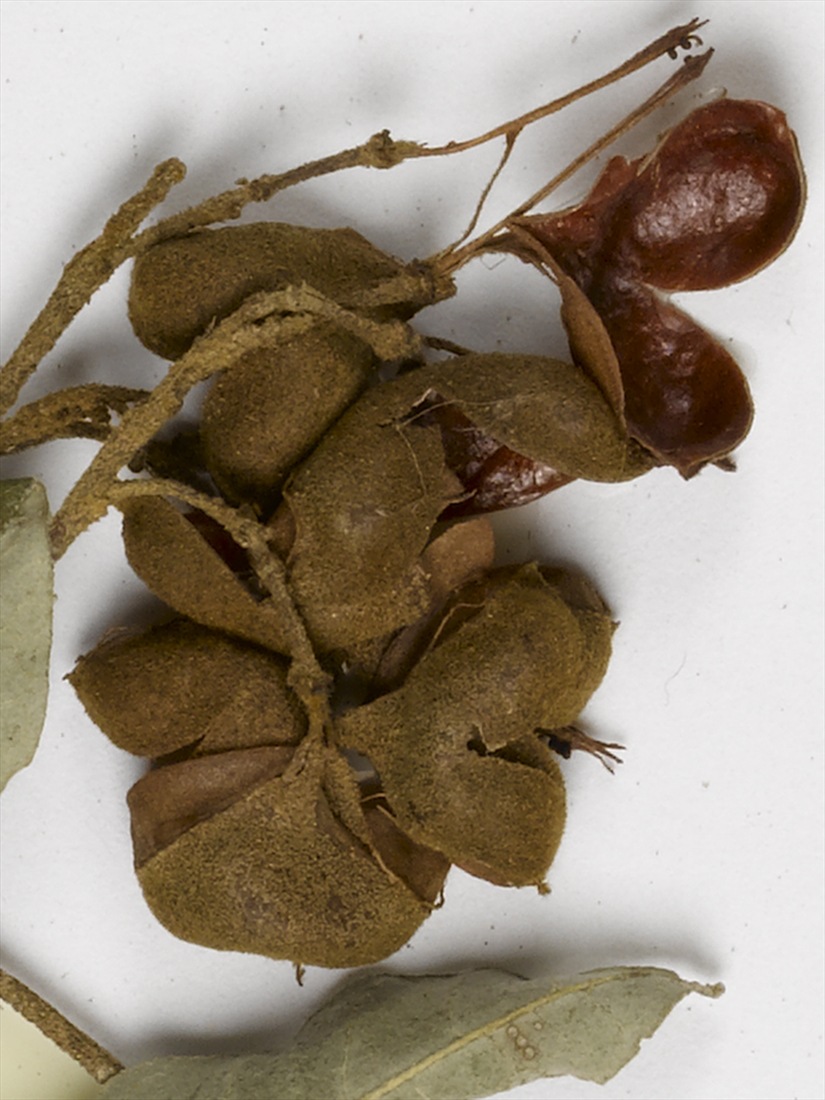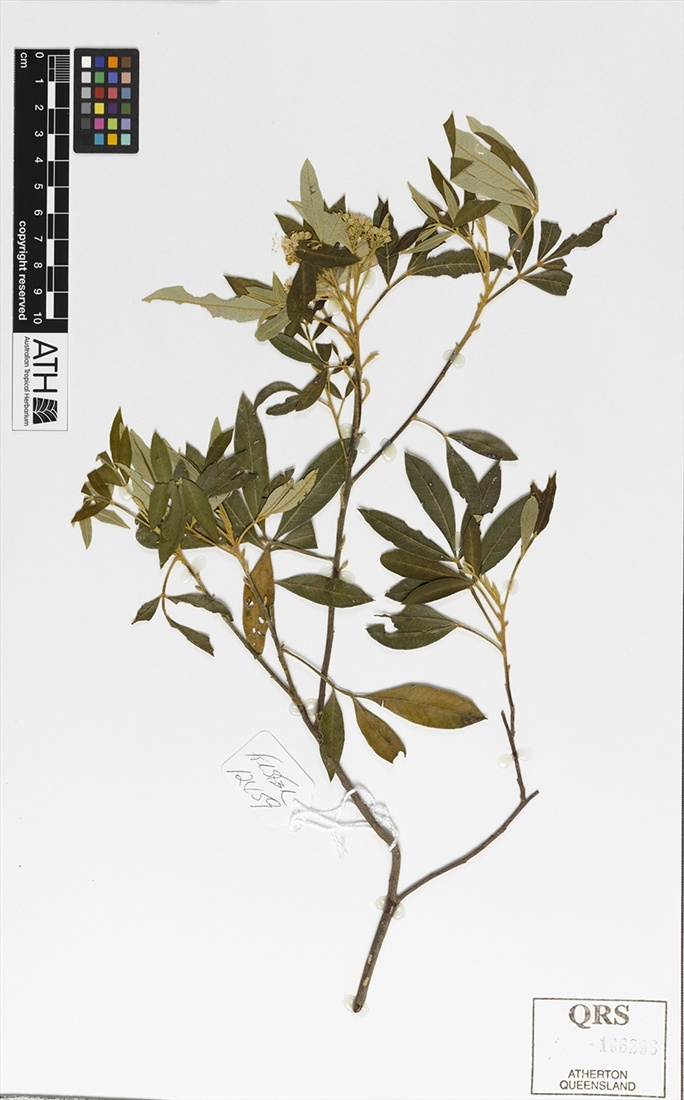Australian Tropical Rainforest Plants - Online edition
Cossinia australiana S.T.Reynolds




Reynolds, S.T. (1982) Austrobaileya 1(5): 486. Type: Wide Bay District: Bingera, 26 Oct 1948, L.S. Smith 4140 (BRI holotypus).
Shrub or tree to 7 metres; buds and young stems tomentose with whitish-brown hairs; stems tomentose, sparsely hairy or glabrous; stipules absent.
Pinnately compound with terminal leaflet sometimes absent, alternately arranged, 35-125mm long; petiole 15-45mm, winged in juvenile; rachis usually winged; leaflets 3-5(7), opposite, entire; lamina oblong-elliptic to lanceolate or oblanceolate, 20-75mm by 10-30mm; apex acute; base cuneate or obtuse, usually oblique; adaxial surface dull dark-green, glabrous or sparsely hairy; abaxial surface paler green, dull, densely covered with whitish stellate hairs; midrib hairy on both surfaces; pinnately veined with 10-20 main lateral veins each side of midrib; laterals impressed and prominent adaxially, raised and prominent abaxially; petiolule 0-4mm.
Inflorescences axillary or terminal, thyrsoid corymbs; peduncles, pedicels and rachises tomentose; flowers functionally unisexual, zygomorphic, 10-12mm diameter, white; calyx deeply 5-lobed, tomentose; petals 4-6, 5mm long; male flowers with a rudimentary ovary and 8 stamens; filaments up to 7mm long; female flowers with a 3-locular ovary and 8 staminodes; filaments 4mm long.
Features not available.
3645





